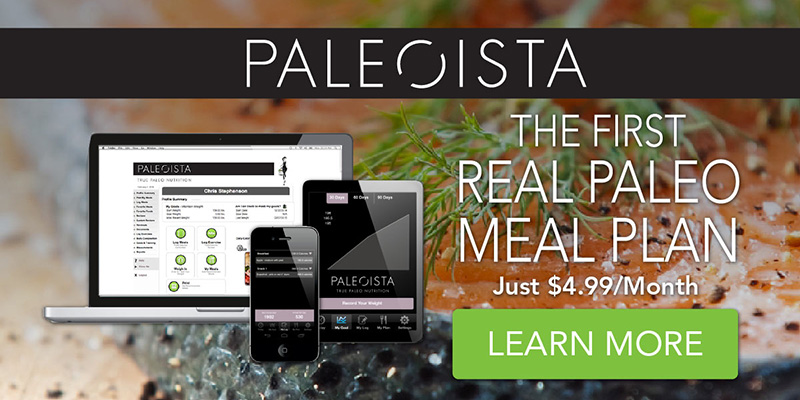Keep Calm and Paleo On: Reduce Anxiety with a Healthy Regime
We all know that a nice, juicy grass-fed steak is a great source of iron. Enjoying it with a hearty portion of sautéed garlic spinach, rich in anti-oxidants and calcium, is a healthy and tasty way to round out the meal. And eating this way on a daily basis is conducive to achieving your ideal, lean body weight, boosting the immune system and creating a steady, balanced energy level all day long.
From a physical standpoint, it’s a no-brainer this Paleo eating plan will get us much further than a diet high in sugar, salt, and refined foodstuffs. But how much of a role will it play in our emotional wellness?
Can what we eat really have the ability to affect our anxiety levels? If so, are there other foods that, on the contrary, may create a feeling of calm and relaxation? Without a doubt.
Anxiety effects approximately 1.5% of the U.S. population ages 18 and older in a given year, which is roughly 3.3 million American adults.1 How is it being treated? 43% of North Americans take mood-altering prescriptions regularly and Paxil and Zoloft (two of the more popular anti-anxiety medications) ranked 7th and 8th in the top ten prescribed medications in the US (these two medications equated to nearly $5 Billion in sales in 2002, with exponential growth since!)2
But perhaps a better question to ask is how many people are addressing the issues that are creating the anxiety in the first place, rather than relying solely on meds? According to Psychology Today, more than 27% of all adults (an estimated 59 million people) received mental health treatment in the two years prior. Of this group, 47% report a history of medication, but no therapy; more than a third (34%) report a history of both medication and therapy; and 19% report a history of therapy, but no medication.3
Ok, so you get the idea. A lot of people experience anxiety. And, in my humble opinion, the real number is likely a lot higher, given the stigma that many associate with feeling anxious, depressed or… gasp…actually going to therapy.
Regardless, there are missing pieces, and while it’s far from my position to comment on whether or not people need therapy or medication, one angle I’m quite comfortable addressing is the role of what we eat and how we move. Addressing these factors alone can help to create a less anxious, more calm approach to living.
From the food standpoint, it’s easy to see why a Paleo diet approach would be the ticket. Naturally void of all white sugar, and low in total sugar, the only being from occasional low-glycemic fruit, a real Paleo approach, helps us automatically avoid the negative reactions related to sugar.
The Standard American Diet (SAD), which is full of sugar, appears to worsen anxiety symptoms and impair the body’s ability to cope with stress. Sugar can cause blurry vision; difficulty thinking and fatigue, all of which may be interpreted as signs of a panic attack, thereby increasing worry and fear. A sugar high and subsequent crash can cause shaking and tension, which can make anxiety worse.
Research has established a correlation between sugar intake and anxiety. In one study, rats that binged on sugar and then fasted displayed anxiety, and in a 2009, rats fed sucrose were more likely to suffer anxiety. While dietary changes alone cannot cure anxiety, they can minimize symptoms, boost energy and improve the body’s ability to cope with stress.4
In addition, the Paleo diet, rich in Omega 3s and food sources of B vitamins (namely fresh vegetables!) further helps to reduce the chances of feeling anxious. Study after study has shown that taking a high quality fish oil supplement containing both the potent omega-3 fatty acids EPA and DHA can help with symptoms of depression and anxiety and even bipolar disorder. In addition, the entire range of B vitamins, including vitamins B12, B6, and Folate, may also be helpful in regulating mood.5
Finally, let’s get moving! A real, modern Paleo lifestyle takes us back to basics, but gives us the opportunity to choose the type of movement we feel most inclined to partake in. Exercise has been found to reduce anxiety in both people and animals and if we pick the style that best suits us, one that we’ll actually enjoy and therefore want to go to, we’re really setting ourselves up for success!
Again, the take away message is certainly not to make light of what can be a debilitating issue or to suggest that all you need to do is to go for a run and make a few changes to your eating regime and suddenly all your troubles will evaporate. Rather, just consider how you’re feeling and what you’re doing proactively to address the cause in the most natural manner you can, in addition to whatever other modalities you may be employing simultaneously.
REFERENCES
[1] “Facts & Statistics | Anxiety and Depression Association of America, ADAA.” Facts & Statistics | Anxiety and Depression Association of America, ADAA. N.p., n.d. Web. 11 June 2015.
[2] “Anxiety Statistics.” Anxiety, Anxiety Disorder Statistics. N.p., n.d. Web. 11 June 2015.
[3] “Fundamentals of Therapy #1: Who Goes?” Psychology Today. N.p., n.d. Web. 11 June 2015.
[4] “4 Ways Sugar Could Be Harming Your Mental Health.” Psychology Today. N.p., n.d. Web. 11 June 2015.
[5] Ambardar, M.D. Sheenie. “10 Ways to Improve Depression and Anxiety without Meds.” The Huffington Post. TheHuffingtonPost.com, n.d. Web. 11 June 2015.






